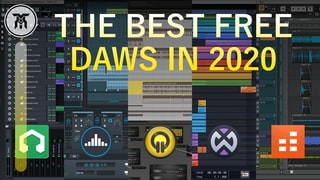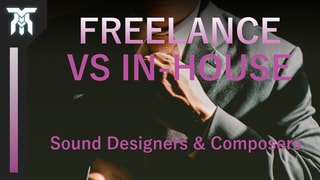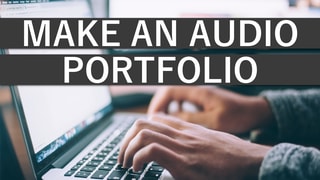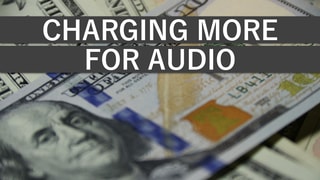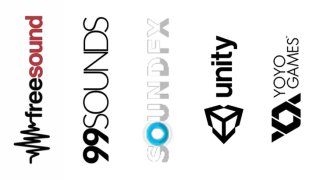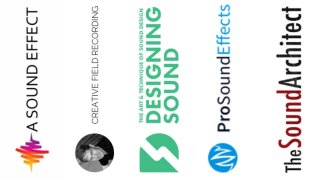Share!
Equipment Needed To Start Making Music
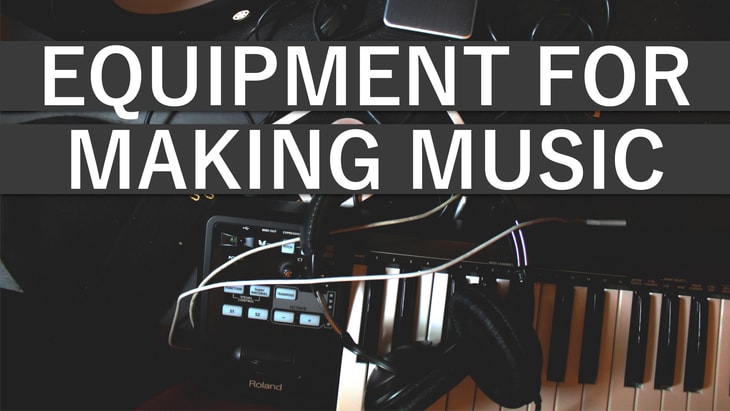
The equipment you need to start making music can vary depending on what you can do live. But, not everyone can play an instrument well enough to make some music that sounds good.
This post will break down some of the essentials you will need to produce music and some of the gear that can wait (maybe forever).
First, let’s talk about the equipment you’ll need to get started, then the advanced stuff.
Primary Audio Equipment
The gear we're going to be talking about here is basically the minimum or entry level requirements. Hey! but don't worry, quite a lot of things you'll need are actually available for free, and they're all legal of course.
Computer Vs Mobile
Making music all starts with something to operate on. Using a computer is the most practical but there are some apps on mobile to make some music and record.
I don't recommend using mobile as a main rig as it really hinders work-flow and doesn't evolve well with your skill.
With all of that aside though, if you're in a pinch or want to get ideas down while on the go and bring them back to your computer, mobile is definitely a possible solution.
Digital Audio Workstation (DAW)
There are DAW's available for Mac, PC and even some made for Linux too.
The Digital Audio Workstation (D.A.W for short) or daw is where all of the audio is recorded, edited, mixed and mastered.
It's what a game engine like Unity or Unreal would be like to a game developer but instead of games, this is an engine for making music.
Synthesizers, Samplers, and Effects
Unless you have an instrument and can play it, making sound effects and music will come down to using plugins to make some noise.
Synthesizers will make sound right from the computer, their essentially digital instruments.
As for samplers, they sample real instruments to reproduce their sound. Basically, each note is recorded manually and built into an instrument that you can play in the DAW.
Many DAWs do come with stock plugins to get you started but there are also some amazing free synths to use as well. These are a great place to start with when just getting into making music.
Speakers / Headphones
When it comes down to listening to how loud certain elements are and what frequencies are present. Some basic headphones or speakers will do at entry level.
As you develop your skills and want to take things to a professional level, some studio monitors (which are just speakers) and "non-consumer" headphones will be an extremely good investment.
Having a proper interpretation of the audio you're working with is fundamental to balancing the levels of each track so it fits well and sounds pleasant as a final product.
With the primary equipment laid out, you can start producing EDM, Beats for hip-hop, Mixing & Mastering, post-production, and other DAW-exclusive genres.
You can also start dealing with audio for video games if you strictly use synthesizers and sample libraries.
Secondary Audio Equipment
To step up your production value and start making better music, this equipment will be a game changer. None of these are required so to speak, but to enter into different fields of audio, they might be (such as a mic).
Acoustic Treatment
Arguably just as important as some good speakers, the way a room is set up acoustically will have a huge impact on how you perceive the sound. Even how the speakers are positioned will need to be accounted for.
Not an absolute requirement, but if you’re going to invest in some speakers (studio monitors) you should put the same, if not more, into things like bass traps, acoustic panels, and sound dampening.
Now, you may not necessarily need a whole lot either. If you have things surrounding your room like a relatively full bookshelf, a carpet or rug under you, and a bed/couch you may not need to do much.
With headphones though, you don’t really need any acoustic treatment unless you want to soundproof your room so you’re not bothered by outside noise.
Microphone
Now, if you are looking to get into recording vocals, instruments, Foley, audio for film or podcasts, you'll need to get a microphone and the proper gear with it.
There are a few types of microphones out there, each with unique characteristics and ideal uses. Generally, a condenser microphone is a versatile option for many uses.
However, a shotgun mic can be a good choice for film and recording very specific audio sources surrounded by unwanted noise.
You can use any type of microphone whether it be dynamic, condenser, or even shotgun-style to record your voice in the studio. It all comes down to how your voice sounds and how the mic complements it.
Windscreen / Pop Filter
If you want to step it up a notch, consider getting a pop filter when dealing with vocals to reduce harsh/unwanted bursts of air from the vocalist's mouth.
A windscreen is a good choice when recording outdoors to reduce/eliminate the sound of wind. This is sometimes even a requirement as the wind could completely ruin a good take.
Of course, these unwanted sounds can definitely interfere with the overall quality of a production but is not absolutely required to get started.
There’s always the option to speak at an angle to the mic, hold up two pencils right in front of your mouth, between you and the mic, or just record in a place where the wind isn’t an issue if outside.
Mic Stand / Mount
A basic stand for holding a mic in place is an ideal piece of gear to get.
This can be used to prevent sound made from handling a mic and having a small tripod to set on a desk is great for podcasts, voice acting, and live streams.
Definitely not an absolute must, but again, it really makes the whole experience much more pleasant and professional.
Luxury Equipment
There is plenty of software and hardware out there that can make your life easier and more pleasant to produce audio but aren’t really required.
Most DAWs will allow you to use a computer keyboard to play music notes, but having the real deal with a musical keyboard can really make things more efficient and comfortable.
The same goes for drum pads and expensive plugins. Simply draw the line at where you are, what you can afford, and where you want to go.
Now that you know what kind of equipment you'll need to get started, you don't need to worry about buying something you may not need right away.
Start getting some hands-on experience and begin to develop your style and skill. If you want to learn more about Audio Production, subscribe to Transverse Audio on YouTube!
Thanks for reading, I hope you found this article helpful.
Featured Post
Share!
Join the newsletter for free stuff and some knowledge too!
Everything you need. No Spam. A heads up before others do.



